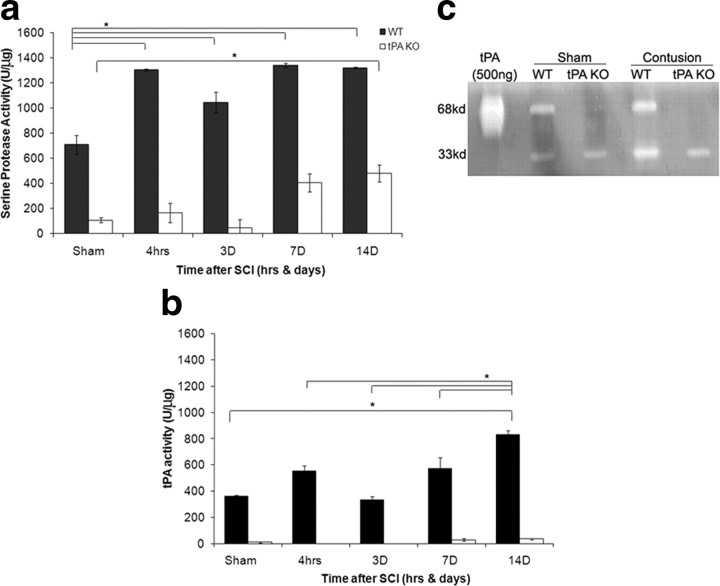Figure 2.
The tPA/plasmin(ogen) system is significantly upregulated 14 d after SCI. a, Serine protease activity was quantified by amidolytic assay in WT and tPA KO sham and 0 (4 h), 3, 7, and 14 d after contusion injury. Repeated-measures ANOVA was used to compare across time points within each genotype (n = 3). Significant ANOVA values were followed by post hoc Holm–Sidak test. Significant post hoc differences are indicated by brackets and asterisks. Compared with WT sham, p < 0.001 for serine protease activity in 0, 7, and 14 d SCI homogenates; p < 0.05 for serine protease activity in 3 d SCI homogenates. Compared with tPA KO Sham, p < 0.05 for serine protease activity in 14 d SCI homogenates. Amiloride, a specific uPA blocker, was used to allow the measurement of tPA activity only. b, Significant repeated-measures ANOVA were followed by post hoc Holm–Sidak test (n = 3). Compared with WT sham, p < 0.05 for tPA activity in 14 d WT SCI homogenates. c, Zymography assay was used to visualize serine protease activity in WT and tPA KO sham and 14 d contusion-injured mice. The tPA band is seen at 68 kDa and uPA at 33 kDa. Pure recombinant tPA was used as positive control. The zymography assay was repeated with 4 sets of biological replicates (n = 4).

